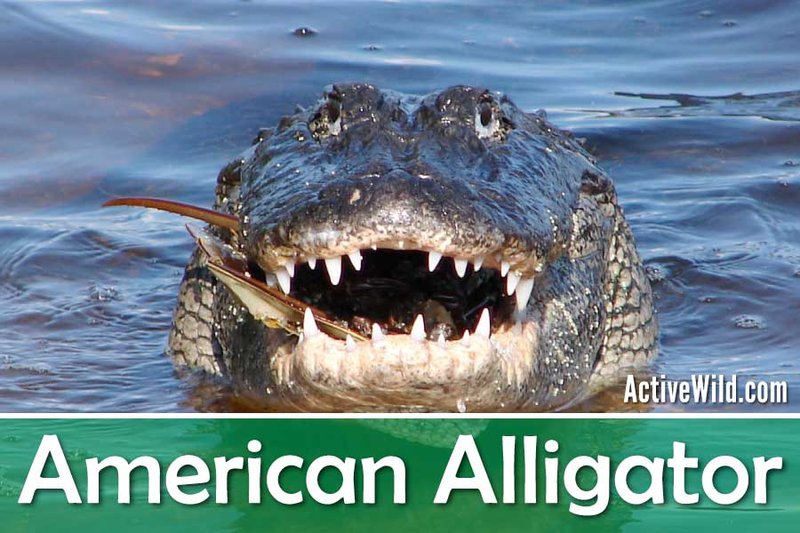
Imagine sipping coffee with a friend as you share curiosity about wildlife. You might say, “Did you know that alligators can grow up to 13 feet long?” Or how about this one: “They can hold their breath underwater for over an hour!” Just like our conversations, let’s explore these amazing creatures further, one surprising fact at a time.
1. Ancient Survivors of the Past
American alligators belong to a group of reptiles called *archosaurs*, which also includes dinosaurs and birds. They’ve been around for more than 150 million years, making them one of the oldest living species on Earth. Think about that for a moment. These creatures have seen the world change dramatically while managing to adapt and thrive.
Their bodies are designed for survival. They have powerful jaws and tough skin, which helps them withstand predators and harsh environmental conditions. This ancient lineage is why many people often refer to alligators as “living fossils.” They represent a crucial piece of history that connects us to a time long gone.
2. Incredible Senses for Hunting
Here’s the thing about alligators: they are built for hunting. Their eyes, ears, and nostrils are positioned on the top of their heads, allowing them to see and breathe while lying low in the water. This unique feature makes them stealthy predators, ready for a quick strike when their prey approaches.
They also have excellent night vision. Alligators can hunt both day and night, making them versatile. If you go out near a swamp at night and hear that distinctive growl, you might want to keep your distance. Those eyes shining in the dark? That’s an alligator, using its advanced senses to find dinner.
3. Diet: What Do They Eat?
You might be wondering what an alligator eats. Well, they’re opportunistic eaters, meaning they’ll munch on just about anything they can catch. Their diet mainly consists of fish, birds, and small mammals, but they’re not picky.
When it comes to larger prey, alligators can take down animals as big as deer or wild boar. They also have an interesting feeding technique known as the “death roll.” This involves rapidly spinning their bodies to tear apart their meals. It’s a bit like using a blender but in the wild! Imagine the power they have to make such a move.
4. Unique Communication Skills
Alligators are not silent creatures; they communicate through a variety of sounds. They can hiss, grunt, growl, and even make a low rumbling sound. During mating season, male alligators will perform a loud display called a “bellow,” which echoes through the wetlands. It’s like a concert of nature that announces their presence to potential mates.
These vocalizations play a significant role during courtship or when defending their territory. In fact, you can hear their bellows from miles away! It’s a fascinating example of how these reptiles communicate in their environment.
5. They’re Cold-Blooded, Literally
American alligators are cold-blooded, or ectothermic, meaning they rely on external sources to regulate their body temperature. During the day, you might see them basking in the sun, soaking up warmth. At night or during cooler weather, they’ll retreat into the water or find a warm spot.
This behavior is crucial for their survival, especially in winter months. They often enter a state known as brumation, similar to hibernation, where their metabolism slows down, and they become less active. It’s an energy-saving strategy that allows them to weather colder temperatures.
6. Breeding and Nesting Habits
American alligators are devoted parents, which may come as a surprise to many! Mating typically happens in spring, and after about 60 to 70 days, the female lays around 20 to 50 eggs in a nest made of vegetation. This nest is strategically built above the waterline to protect the eggs from flooding.
Once the eggs hatch, the mother alligator will help her babies—known as hatchlings—make their way to the water. It’s heartwarming to see how protective she is, guiding them through their first journey. You could think of her as the ultimate mom, making sure her little ones are safe.
7. Lifespan and Growth
American alligators can live quite a long time—up to 65 years or more in the wild! They grow steadily throughout their lives, but growth rates can vary based on factors like food availability and habitat conditions. During the first few years, they can grow rapidly, sometimes adding up to a foot each year.
Their growth slows down as they age, but they don’t stop growing altogether. You might come across an alligator that’s over ten feet long, and it’s quite a sight! Imagine seeing a creature that has been roaming the Earth for decades, adapting and surviving through changing times.
8. Natural Habitat and Distribution
You can find American alligators primarily in the southeastern United States, particularly in Florida and Louisiana. They thrive in freshwater swamps, marshes, rivers, and lakes. These wetlands are crucial, not just for alligators, but also for the entire ecosystem. They provide habitats for numerous plant and animal species.
However, their habitats are under threat from human activities. Wetland destruction for agriculture and urbanization poses significant challenges for alligators. Conservation efforts are vital to ensure these majestic creatures continue to thrive in their natural environment.
9. Conservation Status
Speaking of conservation, American alligators were once classified as endangered due to overhunting and habitat loss. Fortunately, thanks to strict regulations and protective measures, their population has rebounded significantly over the years. They are now listed as “least concern” on the IUCN Red List.
This recovery story is a great example of how humans can make a positive impact on wildlife. However, ongoing conservation efforts are necessary to protect their habitats and ensure their future. It’s a reminder that we all have a part to play in preserving our planet.
10. Myth vs. Reality
Lastly, let’s address some common myths about alligators. One popular misconception is that they are man-eaters. While they can be dangerous, most alligators avoid humans whenever possible. They prefer to stay hidden in their habitats.
Another myth is that alligators are aggressive. In reality, they are generally shy and will retreat if they feel threatened. It’s important to respect their space and observe from a distance. This knowledge can help us coexist peacefully with these fascinating reptiles.
In summary, the American alligator is a remarkable animal that has captured our imagination for centuries. From their unique adaptations and communication skills to their role in the ecosystem, they have so much to teach us. By understanding and respecting these incredible creatures, we can ensure they continue to thrive for generations to come. So, the next time you see an alligator, remember just how special they really are!

